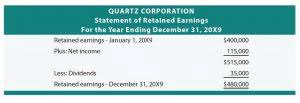
If not, add the missing deposits to your records and your total account balance. Sometimes banks make errors by depositing or taking money out of your account in error. preparing a bank reconciliation You will need to contact the bank to correct these errors but will not record any entries in your records because the bank error is unrelated to your records.
Also check the deposits in transit listed in last month’s bank reconciliation against the bank statement. Immediately investigate any deposit made during the month but missing from the bank statement (unless it involves a deposit made at the end of the period). A bank reconciliation should be prepared periodically because it is an important part of the internal controls of a company. Usually, most companies prepare bank reconciliations at the end of each month. That is because they receive bank statements at the end of each month.
Not Sufficient Funds Cheques
Infrequent reconciliations make it difficult to address problems with fraud or errors when they first arise, as the needed information may not be readily available. Also, when transactions aren’t recorded promptly and bank fees and charges are applied, it can cause mismatches in the company’s accounting records. The purpose behind preparing the bank reconciliation statement is to reconcile the difference between the balance as per the cash book and the balance as per the passbook. NSF cheques are an item to be reconciled while preparing the bank reconciliation statement. This is because when you deposit a cheque in your bank account, you consider that the cheque has been cleared by the bank.
- When a company maintains more than one checking account, it must reconcile each account separately with the balance on the bank statement for that account.
- Journal entries are required to adjust the book balance to the correct balance.
- Outstanding checks are those that have been written and recorded in cash account of the business but have not yet cleared the bank account.
- A bank reconciliation statement is a valuable internal tool that can affect tax and financial reporting and detect errors and intentional fraud.
While expensing out the missing amount is an option, it is not the recommended approach. That is because bank reconciliation is a crucial part of the internal control process of a business. Even minute discrepancies can be an indicator of other underlying problems. Therefore, it is better if the bank reconciliation is accurate, and there are no missing amounts.
Check for Other Transactions
When you look at your books, you want to know they reflect reality. This can also help you catch any bank service fees or interest income making sure your company’s cash balance is accurate. The bank reconciliation is an https://www.bookstime.com/articles/annual-income internal document prepared by the company that owns the checking account. Completing a bank reconciliation entails matching the balances on your bank statement with the corresponding entries in your accounting records.
- To do this, a reconciliation statement known as the bank reconciliation statement is prepared.
- If you find any bank adjustments, record them in your personal records and adjust the balance accordingly.
- Also, when transactions aren’t recorded promptly and bank fees and charges are applied, it can cause mismatches in the company’s accounting records.
- If you commonly make deposits into your account, you’ll want to compare your bank account deposit totals to those listed in your general ledger.
A bounced cheque leads to a fall in one’s reputation in the eyes of the bank. This may lead to future misunderstandings for a firm’s relationship with Banks. The Ascent is a Motley Fool service that rates and reviews essential products for your everyday money matters.

Comentarios recientes